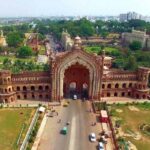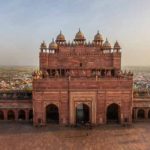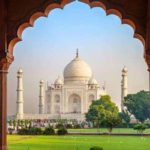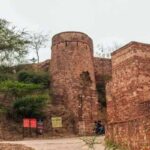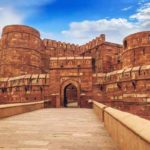Things To Do In Gwalior is a historical city that served as the capital of the Scindia Kingdom before independence. The Gwalior Fort, which stands on a steep, isolated sandstone outcropping, has been listed as a pearl in India’s crown of castles.
Gwalior is a beautiful and well-known city known for its magnificent palaces, ancient temples, and mediaeval fort. Tansen, the great musician, was born in this town. The city is also known for its illustrious history and diverse cultural heritage. The hill of Gwalior, also known as the city of forts, had previously acted as the seat of various northern Indian kingdoms. The fort was said to be India’s “pearl of fortresses,” according to legend. This magnificent hill, which commands a panoramic view of the entire city, presents a rapture centred on the scenic environment of this thrilling place.
According to legend, a hermit called Gwalior Monuments healed a king named Suraj Sen of a deadly disease several years ago. The city was built by the grateful prince and named after the hermit. Suraj Sen was given a new name by the hermit, Suraj Pal, since he was given a new life. He was told to make sure that his Pal ancestors did not abandon the surname. After several generations, a prince of the family dropped the surname. He lost his kingdom to a nobleman while on a visit to a neighbouring kingdom not long after Things To Do In Gwalior.
Gwalior, founded by King Suraj Sen, exudes a majestic aura that speaks volumes about its glorious past. It is a magnificent historical city surrounded by beautiful hills and greenery, and it is home to India’s most famous royalty. Gwalior‘s striking architecture reflects the city’s royal charm. Gwalior has a lot to offer tourists in terms of well-known tourist attractions. Suraj Kund, Phool Bagh, and Hathi Kund are some of Gwalior’s most famous tourist attractions, Man Mandir Palace and Jai Vilas Mahal are also worth seeing.
Gwalior, also known as the “Capital of Music,” is home to one of the oldest gharanas, or Hindu classical music colleges. Above all, visitors will take part in a big cultural event commemorating the great musician ‘Tansen‘ that takes place every year during the winter Things To Do In Gwalior.
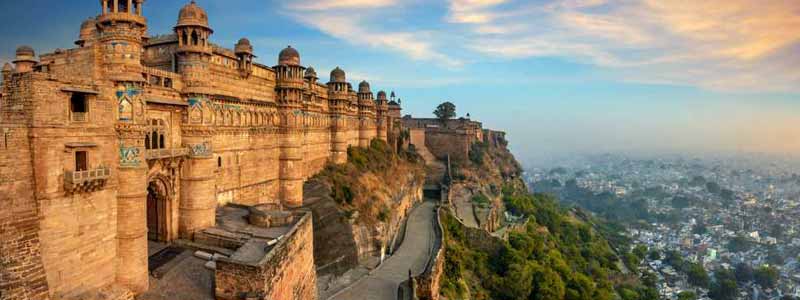
Gwalior Fort, Gwalior
The Gwalior Fort, an architectural masterpiece from the eighth century, is situated on a hilltop near Gwalior, Madhya Pradesh. The architecture of this magnificent hill top had been subjected to numerous changes due to the conquests of various dynasties and rulers. The fort’s defensive system consists of two main palaces, temples, and water reservoirs. The Teli-Ka-Mandir and Man Singh Palace are the most well-known among them. The former was constructed in the Dravidian style shrine and is known for its lavishly sculpted exteriors. The two pillared Saas-Bahu temples in the fort complex are also worth a look.
Then there’s the Man Singh Palace, which was built in the 15th century by King Man Singh. The well-known Palace has a stunning architecture. The Man Singh Palace represents the true colours of the Tomar dynasty with blue ceramic tiles on the front façade and an impressive frame. The Gujari Mahal is part of the Gwalior Fort complex, which also includes the Man Singh Palace. Raja Man Singh designed this for his beloved queen Mrignayani. The Karan Palace, Jahangir Mahal, and Shahjahan Mahal are some of the other prominent structures inside the magnificent Things To Do In Gwalior.
Between the autumn of October and the spring of March is the best time to visit the Gwalior fort. The best time to visit is during the monsoon season.
The Sound and Light Show at Gwalior Fort
The Sound and Light Show is an important part of the Gwalior Fort visit. The display takes place in the evenings at the Man Mandir Palace’s open amphitheatre. Every night, the Sound and Light Show is performed.
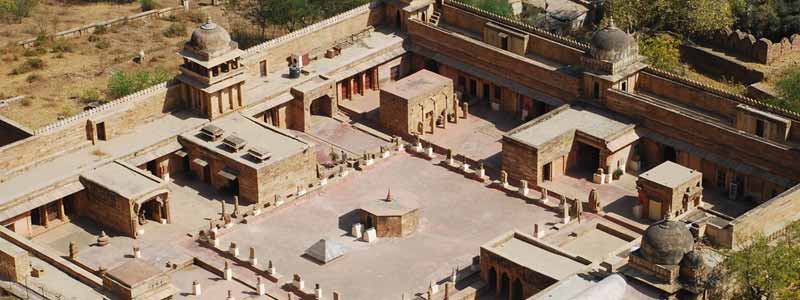
Gujari Mahal Museum, Gwalior
Gujari Mahal is a palace inside the Gwalior Fortress in the historic city of Gwalior in the Indian state of Madhya Pradesh. Raja Man Singh Tomar constructed the Gujari Mahal in the Gwalior Fortress for his beloved wife Mrignayani, a Gujar princess. The queen is said to have desired a separate palace for herself, complete with a daily water supply from the nearby Rai River.
The Gujari Mahal, which is situated on the fort’s eastern gate, was converted to an archaeological museum in 1922. Terracotta heads, stone inscriptions, bronze and stone sculptures, coins, paintings, arms and weapons, and many other excavated artefacts are on display at the museum.
Gujari Mahal has been transformed into a significant museum by Madhya Pradesh’s Directorate of Archaeology, Archives, and Museum. Within the museum are galleries showing various artefacts and ancient artefacts from the 1st and 2nd centuries B.C. Inscriptions engraved in Devnagari, Brahmi, and Persian scripts are also on display at the museum, which help to illuminate ancient Indian legends. Miniature sculptures of’salabhanjika’ and replicas of frescoes from the Bagh cave are among the fascinating items on display. The museum’s main attraction is a piece of the Garuda Empire’s “heliodorus pillar” from Vidisha, Things To Do In Gwalior.
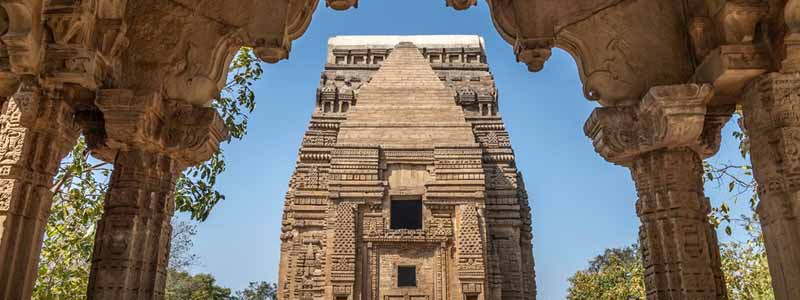
Teli Ka Mandir, Gwalior
Teli ka Mandir is a Hindu temple located inside the Gwalior Fort in the state of Madhya Pradesh. The temple was originally dedicated to Lord Vishnu, but it was later converted to a Shiva temple. The temple’s outer walls have been intricately carved, and many excellent Hindu gods and goddesses sculptures can be found there. During the reign of Pratihara King Mihira Bhoja, the temple was constructed between the eighth and eleventh centuries. The Temple is one of Gwalior Fort’s oldest buildings.
Teli ka Mandir is thought to mean “Oilman’s Temple,” and there are many stories associated with the name. Teli ka Mandir is a unique blend of Nagara and Dravida architectural styles that exemplifies the importance of Buddhist architecture. The temple’s outer walls have been intricately carved, and many excellent Hindu gods and goddesses sculptures can be found there. The temple has a rectangular plan and is topped by a barrel vault, with empty niches on the walls and a wide pediment. The temple stands 35 metres tall, with diamond and lotus designs on the horizontal band at the top of the archway, suggesting Buddhist influence. At the temple’s entrance, there is a lovely Garuda sculpture.

Gwalior Zoo, Gwalior
Gwalior is a vibrant city with a long history, and the Gwalior Zoo is just one more feather in its hat. The Gandhi zoo (as it is also called) was established by the royal family Madhao Rao Scindia in 1922. It is actually a part of a larger garden known as Phool Bagh and houses various rare species of animals. Golden peasants, sambhars, bison, hyenas, and spotted deer are some of the animals that can be found in the region, The range of wild animals found here includes black bucks and a white tiger. The zoo is also home to a number of smaller species of crocodiles, rodents, monkeys, and birds.
The 8 hectares of land that make up the zoo have been designated as a protected site due to the presence of endangered wild animal species, As part of its inheritance, the Municipal Corporation of Gwalior maintains it. The Prince of Wales inaugurated the Phool Bagh almost a century ago, and it is still well-maintained and conserved today, including the provision of healthy and clean animal habitation facilities. A prayer hall, gurudwara, mosque, and theosophical lodge are all located within the Phool Garden.
The Gwalior Zoo is a great place to visit with your family, particularly if you have children. It is also a popular destination for wildlife enthusiasts who want to see rare and endangered species such as the white tiger in the area, Things To Do In Gwalior.
Moti Mahal, Gwalior
The Moti Mahal is one of Gwalior’s most important historical structures. For more than 130 years, it has served as the seat of state power in central India. It was built in the Hindu architectural style by the Scindia rulers of Gwalior in 1825. The Moti Mahal has over 300 rooms. Many of the rooms and columns in this historic structure have been polished with gold. Baijatal, a cistern that was designed to look like an Amphitheater in the sea, adds a pearl to the neck less. There is a large network of Stone Fountains in the gardens surrounding Moti Mahal.
The wall paintings at Moti Mahal are extensive. Many of the rooms are decorated with beautiful Hindu paintings. The mosaic work of coloured glasses and murals portraying Raag Raagini are two of the most notable paintings. Until 1958, the Madhya Bharat Legislative Assembly was held in Madhya Pradesh’s court hall ( Durbar Hall ). The walls and roofs of Durbar Hall are covered in Golden Polish. Even in these days, the chandelier’s lights give a golden lustre to the Durbar Hall when it is illuminated.
The legislative assembly was moved to Bhopal after the establishment of Madhya Pradesh in 1958, and the power centre of governance shifted to Bhopal as well. Many State Government offices, especially at the Division and District levels, continue to operate in Motimahal.
The commissioner of the Department of Land Records and Bandobast of Madhya Pradesh, Revenue Division, Commissioner Excise, Commissioner of Transportation, MP, and Commissioner of Local Funds Examination and Commissioner Gwalior are among the main offices that operate in the Moti Mahal building. The glory of Moti Mahal, which existed prior to 1947 or until November 1956, has vanished. However, since this historic building and the surrounding area are both heritage zones, they could be protected if the government and the people of Things To Do In Gwalior work together to protect our heritage.
Jai Vilas Palace, Gwalior
The Jai Vilas Palace in Gwalior, located in the city’s heart, is one of the city’s most magnificent buildings. Maharaja Jayajirao Scindia built Jai Vilas Palace in 1874 CE and it was the private property of the Scindia family’s supreme gathering. The mother queen of the Scindia royal family transformed Jai Vilas Palace into a show corridor, Srimant Jiwajirao Scindia’s life is being commemorated. When all was said and finished on December 12, 1964, the then-President of India opened the museum to the general public. For a better reflection of tradition, all aspects of the illustrious designing arrangements of the palace are complicatedly organised and enhanced by specialists of those conditions.
The imperial living arrangement is a compositional puzzle since it combines Corinthian, Tuscan, and Italian architectural styles. You would not have hoisted requirements from another fortress if you had seen the illustrious habitations of Rajasthan. Nonetheless, there are some excellent art crafts in this illustrious living arrangement presentation corridor, Things To Do In Gwalior.
Make every effort to avoid missing the 3.8-tonne light apparatuses and the silver preparations for serving drinks and food. These two factors contributed to the success of the visit. The hall of Durbar, which is delightfully enlivened with gold furniture, is the imperial residence’s most appealing attraction. One of the world’s largest and grandest chandeliers can be found in the Durbar hall, which is regarded as one of the heaviest in all of Asia. Within is a massive dining table with silver lining setups that was used as a trolley for serving food to members of the all-inclusive community. The stronghold’s distinct attractions include the scrutinising halls, drawing rooms, breakfast room, and JSM hall.
Amma Maharaj ki Chathri, Gwalior
Amma Maharaj Ki Chhathri is a tourist attraction in Gwalior that is the royal memorial ground of the Sindhia ruler dynasty. It is located in Lalitpur colony, Lashkar, in the heart of the district.
The elevated, dome-shaped pavilions at Amma Maharaj Ki Chhathri’s, also known as cenotaphs, are a common feature in Indian architecture. Amma Maharaj Ki Chathri is a beautiful and lush garden with acres of trees and a floral atmosphere. There are numerous such cenotaphs scattered throughout the region, as well as numerous small temples. Madhavrao Scindia’s Chathri is among those on display. It’s a nice spot to go for a stroll and relax in the greenery. The temples’ and Chathri‘s’ architecture is a perfect example of Indian culture. There is a children’s play area and a cafe, as well as a parking lot outside.
The best time to visit is in the morning, about 8:00 a.m. Amma Maharaj ki Chathri is open to the public from 5:30 a.m. to 6:00 p.m. It is open every day of the week except Sunday.
Tomb of Tansen, Gwalior
The great Tansen, the composer extraordinaire of Akbar’s Court, is buried in Gwalior, a pillar of Hindustani classical music. The annual music festival is held in the beautiful garden where the tomb is located during the months of November and December. Different personalities from around the world also come to enjoy the music.
Gwalior is also known for the tomb of Tansen, Akbar’s Court musician extraordinaire (one of his “nau ratan,” or nine jewels). Gwalior has a long and illustrious musical history, and it is still a major player in Hindustani classical music. Tansen, a Dhrupad exponent, went on to develop the Gwalior Gharana style, Amjad Ali Khan, a world-renowned Sarod player, is a contemporary exponent.
Designed in the early Moghul architectural style, the memorial to this great musician has a pristine simplicity to it. The tomb is more than a monument; it is a piece of Gwalior‘s living cultural heritage. During the festival, the country’s top musicians congregate here to play, Things To Do In Gwalior.
Sas-Bahu Temple, Gwalior
The famous Sas Bahu temple in Gwalior was dedicated to Lord Vishnu by King Mahipala. Lord Vishnu is also known as Sahastrabahu, or “Many-Handed Vishnu.” However, the name eventually changed to Sas Bahu Temple, probably due to mispronunciation or misinterpretation.
Lord Vishnu is regarded as the Universe’s protector. He keeps watch over this world and punishes anyone who disobeys him. But he is also regarded as the most compassionate of the Hindu Gods, who come to his followers’ aid in any situation.
King Mahipala wished for his Kingdom’s growth and general prosperity. As a result of The Lord’s rant, a temple was built to honour Lord Vishnu. As a result, this temple was given the name Sahastrabahu, which was later changed to Sas Bahu Temple. King Mahipala completed the building of this temple in the year 1092 AD.
A Sanskrit caption can be found on the gate of the Sas Bahu Temple in Gwalior. Lord Brahma, the Maker, Lord Vishnu, the Preserver, and Lord Shiva, the Destroyer, can all be seen through the doorway.
The temple exhibits a rare level of architectural talent, and it possesses many of the characteristics of a magnificent place of worship. The Sas Bahu Temple consists of two temples that are collectively known as the Sas Bahu Temple. Since one of the temples is larger than the other, one is referred to as the Mother-in-Law, and the other is referred to as the Daughter-in-Law. Graceful figures are scripted on the temple’s wall, and there are pillars that show off architectural prowess.
Gopachal Parvat, Gwalior
Gopachal Parvat is a historic Jain religious site in the Madhya Pradesh city of Gwalior. The Gopachal rock-cut Jain monuments are situated within the city limits of Gwalior’s Fort.
Gopachal rock-cut Jain monuments, a group of Jain carvings, is another name for the parvat. These are older than the Siddhachal Caves, which are about 2 kilometres away, but the monuments are not as massive as those found in the Siddhachal Caves. A one-hour visit is expected to fully explore the site.
It has Jain thirthankar statues, and people who practise Jainism or have a special interest in the religion can go see them. The entrance is free, and it is open from 6:00 a.m. to 7:00 p.m.
Man Mandir Palace, Gwalior
The Man Mandir Palace is a historically significant structure. Many heartfelt tales of mindless power have been told there. It is an excellent example of mediaeval and Hindu architecture combined. It is a four-story structure with two underground levels. It has a spherical shape.
Located at the north-eastern end of Gwalior‘s famous fort, Man Mandir Palace in Gwalior was built in the 15th century under the leadership of Tomar ruler Man Singh Tomar. It is historically important, and many heartwarming tales have been associated with it. It has four levels, two of which are underground, and is a fine example of mediaeval architecture combined with Hindu architecture. It later passed through the hands of many dynasties, including the Rajputs, the Delhi Sultanate, the Mughal, the Maratha, the British, and the Scindias. It’s also known as Painted House because of the brightly coloured pictures of flowers, trees, animals, and people on the walls.
The Palace explains how many Rajput women killed themselves in order to flee Iltutmish’s Kurur army. You can hire a local guide to accompany you on your visit to the palace for a small fee. It was here that Aurangzeb assassinated his brother Murad. Jauhar Talab, a pond where Rajput wives used to bathe, is also located here. Come and see this historical landmark for your friends and family, Things To Do In Gwalior.

